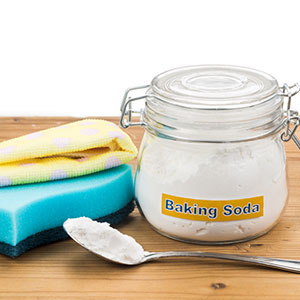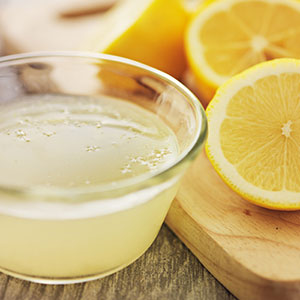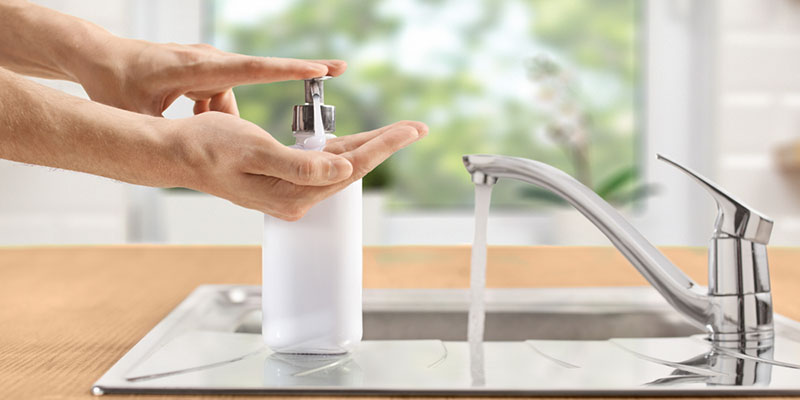How To Remove Rust From Stainless Steel Utensils

Clean your Stainless Steel Utensils
Maybe you have purchased something best stainless steel utensils in the hope that you will never need to worry about rust, unfortunately, it doesn’t turn out like that. Chances are you’ve noticed rusty areas on the surface of your utensils and need to know how to remove rust from stainless steel utensils.
Well, you’ve landed on the right page because we are going to share some useful ways to remove rust from stainless steel products. Also, you will get to know how to prevent rust on stainless steel.
To know things in detail, let’s dive in.
Why and When Does Stainless Steel Rust?
Stainless steel is less likely to rust than other metals. For this, people often are surprised that their stainless steel utensils rust at all. Well, though stainless steel comes with built-in corrosion resistance, it can rust in some conditions.
- When exposed to moisture, damaging chemicals, heat, grease, or saline for prolonged periods of time.
- Stainless steel’s resistance against rust depends on the presented amount of chromium. If there’s a lack of chromium content near the stainless steel’s surface, a new layer of chromium oxide can’t be formed once the top of the layer gets scratched off.
- Exposure to pool-water or seawater may lead your stainless steel rust because of the corrosive nature of chlorine presented in the saltwater.
- Extremely high temperatures (e.g 750-1,550)° Fahrenheit range.
- If you use steel wool to clean your stainless steel tool, there can be a rust formation. Because chromium concentration level matters (at least 12% is crucial) to protect your stainless steel from rust. And, if the tiny particles of steel wool remain on the surface of that stainless steel, it may lead the chromium concentration level to fall below 12%.
Rust Removal from SS Utensils: 3 Types of Rust to Deal With
While dealing with the rust spots of your stainless steel utensils, you will find three different cases. And, guess what? You need individual solutions for each case. Sounds like a big deal? It’s, not at all.
Here, we have broken each case down, just check them out.
Case 1: Removing Small Rust Spots
This part is all about removing the small rust spots only.
Method 1: Using Baking Soda
If it’s about some unseemly rust spots of your pan, simply mix 1 tablespoon baking soda and 2 cups of water. If you are dealing with larger spots, overlook this method and go ahead with the next steps because baking soda is a mild abrasive and works great only for the small spots.
However, once you are done mixing baking soda with water, rub the paste on the rust spot. To apply the mixture gently, use a clean, soft cloth.
Done? Now, use a damp paper towel to rinse and wipe the affected area.
Method 2: Using Vinegar
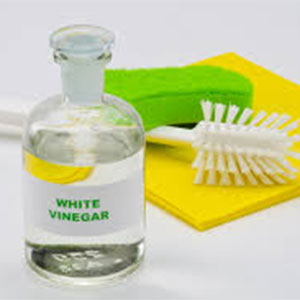 If the rusty utensil is not too big to submerge in a cup of vinegar, this process will work the best. So, if possible, take a large bowl of vinegar and submerge that utensil in it.
If the rusty utensil is not too big to submerge in a cup of vinegar, this process will work the best. So, if possible, take a large bowl of vinegar and submerge that utensil in it.
This is the best process if you’re going to remove rust from cutlery. In case, it’s not possible to submerge the rusty portion of your stainless still object, then take a spray bottle and fill it with vinegar.
Then, spray a coat of vinegar onto your rusty utensils. Or, you can simply pour a dash of vinegar onto a scrubbing pad and wipe away the rust. Worth keeping in mind that the scrubbing pad needs to be soft and you need to do the wiping job so gently that you don’t damage your utensils.
Once you’re done applying vinegar, wait for 5 minutes. Use a damp sponge to wipe the rust. Though any type of vinegar is okay to use here, distilled white vinegar will work best.
Method 3: Applying Lemon Juice
Take a bowl and mix lemon juice with baking soda to create a paste. About the amount, take an equal amount of both of the ingredients (for 1 tablespoon of lemon juice, take 1 tablespoon of baking soda).
Apply the paste onto the rusty areas of your stainless steel utensils. Now, scrub the rust away using a damp sponge.
If you notice that the rust is still there even after one application of the paste, apply it again. Then wait for 15-30 minutes and let the paste sit on the rust. After 15-30 minutes, use a damp sponge to scrub the rust away.
You also can use lime juice as a replacement for lemon juice here.
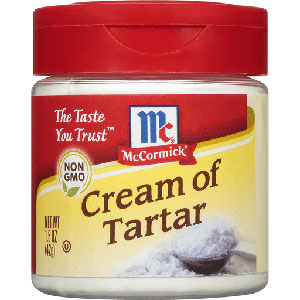
Method 4: Coating with the Cream of Tartar
Take 1 tablespoon of cream of tartar and add a few drops of lemon juice in it.
Combine them well and coat the rusty areas on your stainless steel with the mixture. To rub the mixture over the rust spots, use a soft sponge.
Finally, use a damp sponge to wipe away and dry it using a dishcloth.
Method 5: Using Lighter Fluid
Since lighter fluid is a flammable chemical, choose this method as a last resort. You need to spray a bit of lighter fluid on a dishcloth. Then, use that dishcloth to scrub the rusty areas.
Once you clean the rust, use a damp sponge and wipe the fluid away thoroughly.
Never follow this method when you are near an open flame.
Case 2: Removing Larger Rust Spots
If you notice a bigger problem than the previous one, here’s your solution.
Step 1: Rinse the Rust Spots Well
Firstly, you need to rinse the rusty area of your utensils with fresh water. Pour or spray water on the rust spots or submerge the entire utensil in the water.
Step 2: Sprinkle a Layer of Baking Soda
Now, it’s time to sprinkle a layer of baking soda on the rusty areas of your utensil. Leave the utensil for 30-60 minutes after applying the baking soda.
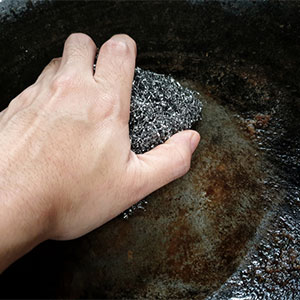 Step 3: Scrub the Rust
Step 3: Scrub the Rust
Rub or scrub the rusty stainless steel object with a soft-bristled brush, an old toothbrush, or a sponge. Do this job gently lest you damage your favorite pan or cutlery.
Once done, rinse the area well using a damp paper towel. Lastly, use a dry paper towel to dry the area.
A microfiber dishcloth can also be used as a substitute for a dry paper towel.
Case 3: Dealing with More Drastic Rust
And, what if you’re dealing with so drastic rust that you find it too difficult to remove? Here’s what you need to do, go through these steps below and get your result.
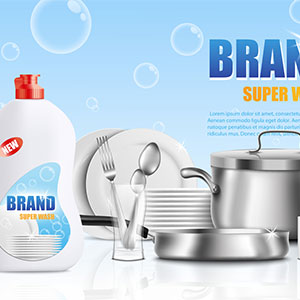 Step 1: Use a Liquid Cleaner
Step 1: Use a Liquid Cleaner
Pick a liquid cleaner that contains oxalic acid. Why oxalic acid?
Well, it is a common, heavy-duty cleansing ingredient that works great to eliminate even the most tenacious rust spots.
Spray the cleaning solution onto your rusty stainless steel and wait for a couple of minutes.
Step 2: Wipe the Cleaner Away
After a few minutes, you apply the cleaning agent, wipe it with a damp sponge. Once the rust is clean, rinse the 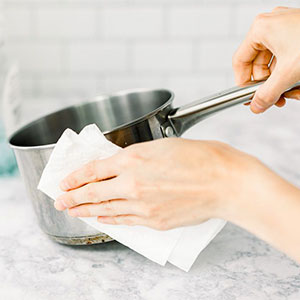 area well using fresh water. Then, dry the utensil gently with a clean towel.
area well using fresh water. Then, dry the utensil gently with a clean towel.
A gentle reminder, avoid using any abrasive cleaner. Sometimes, you may find it difficult to deal with drastic rust and tempt to use any heavy-duty cleaning product. But you have to avoid this temptation if you want to keep your stainless steel damage-free.
And, use the liquid cleaners only, avoid cleaning solutions containing grit. Moreover, cleaning solutions that contain a combination of oxalic acid and chlorides (bromine, chlorine, fluorine, etc) can damage your stainless steel utensils.
How to Prevent Rust
- Rinse the utensils well before using the dishwasher, more importantly, if you are not going to run it immediately. Otherwise, salty or any other acidic food remnants on utensils will stain them.
- Do not store dirty stainless steel utensils in your dishwasher for days, it can lead them to have stains.
- Avoid over-packing the basket of your cutlery, there’s high risks of having stains. Do not let the items touch each other, but how? Using a grid (that is more specifically an anti-nesting grid) will help to do this job. It’s crucial to keep stainless steel away from silver or copper items because the chemicals tend to react with hot water.
- Avoid soaking stainless steel products for long periods in soapy water, salt-water, or bleach solutions.
- Try not to use any kind of abrasive cleaning aids.
- If you notice stains like watermarks or more persistent rust stains on knife blades, go for a non-abrasive metal cleaning liquid or paste.
- Do not use sandpaper or steel wool to scrub off the rust. It may eliminate the rust once but it also may scratch the utensil which may leave ugly marks on the surface.
- Keep a silicone gel packet with your stainless steel utensils when these are left packed up as well as unused for a prolonged period. Otherwise, you may notice the worst stains on the utensils. Hence, the gel absorbs the moisture and keeps any bad smell from getting collected in them.
- Invest in high-quality products only.
- If you notice any water stain, tarnish, or discoloration, increase using fresh water to rinse and make sure you wash off all the accumulated chemicals.
- To prevent the situation from getting worse, get rid of rust spots right after you notice them.
- Never let the utensils stay wet for long. Wipe them dry using a soft cloth as soon as you wash them.
Frequently Asked Questions
Conclusion
That’s all we stored for you. Are you still confused about how to remove rust from stainless steel utensils? Hopefully, your answer is a big NO as we tried our best to put every relevant information regarding this topic here.
Dealing with drastic rust spots is a harder nut to crack than preventing rusts from the very beginning. Stay careful about using and maintaining your utensils to avoid bigger problems in the future.
Good luck!
- 10 Best Stainless Steel Utensils (Relish the Dining Elegance)

